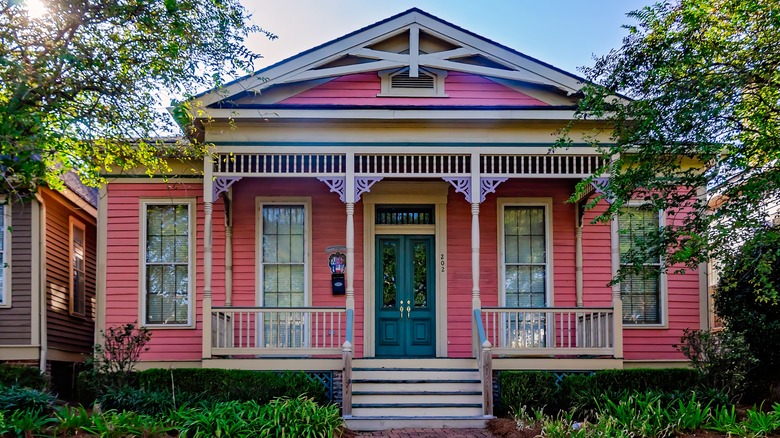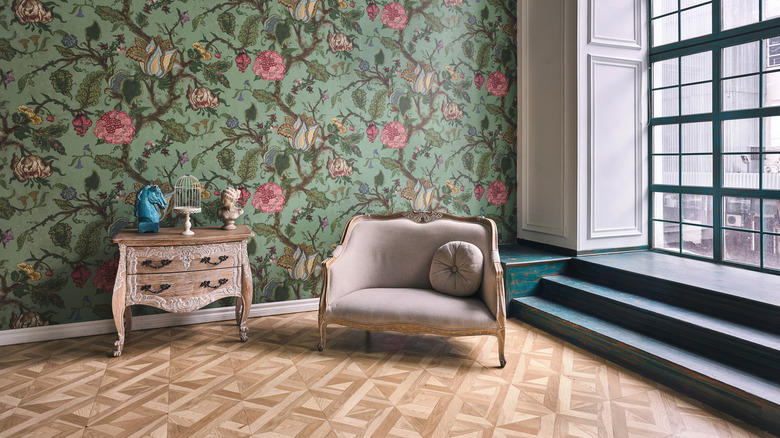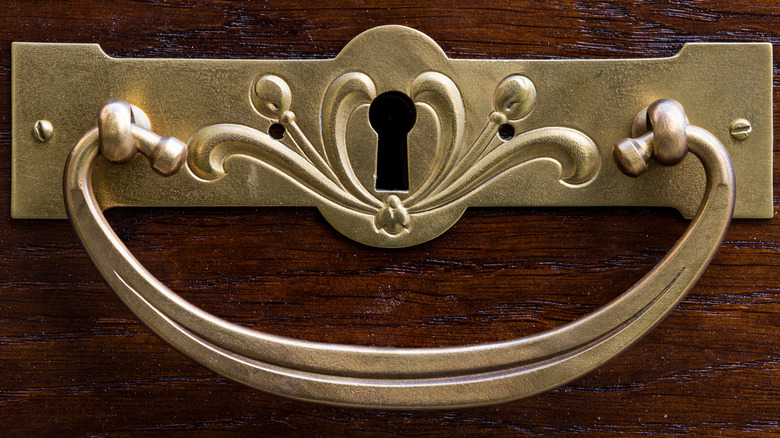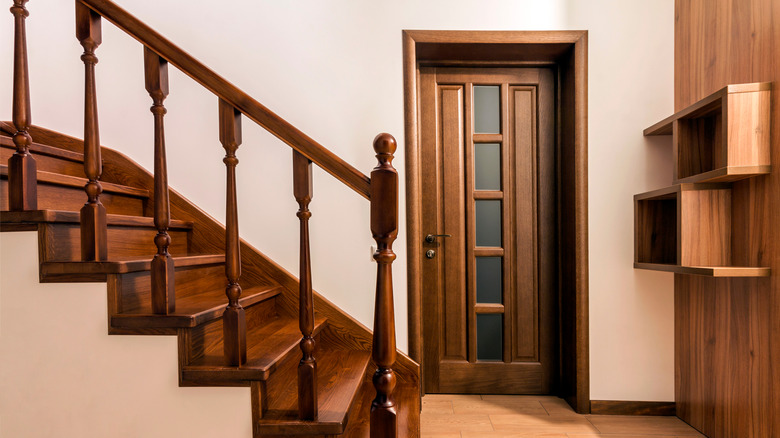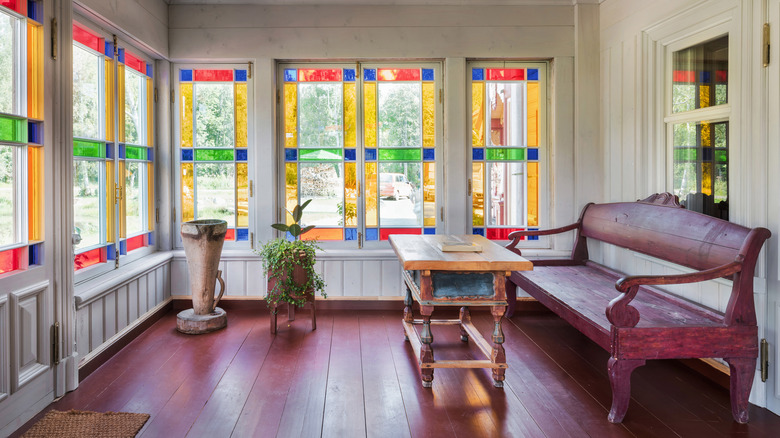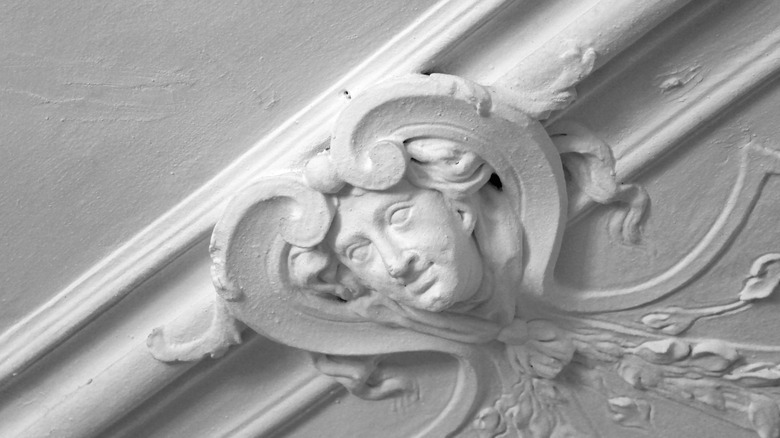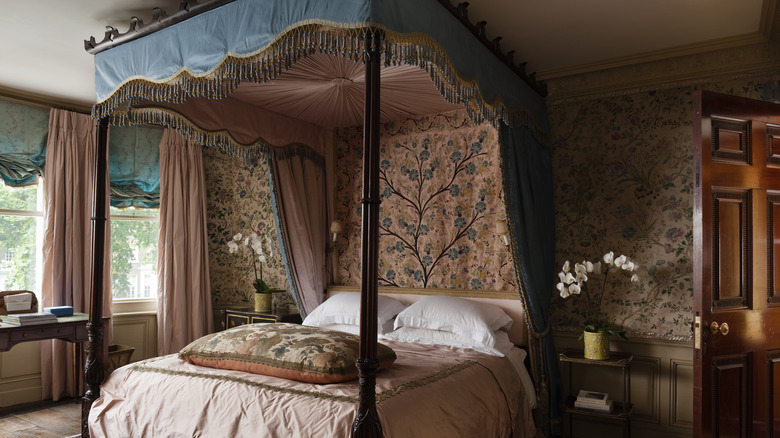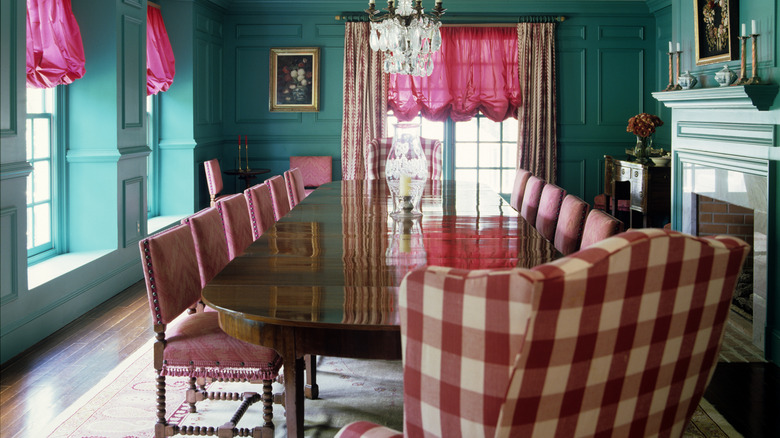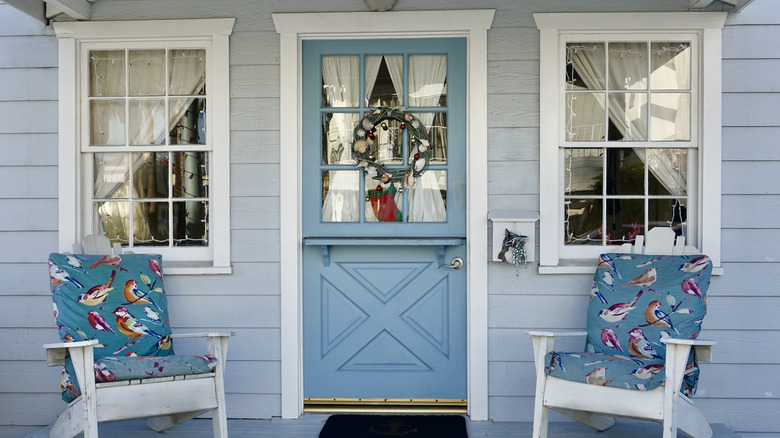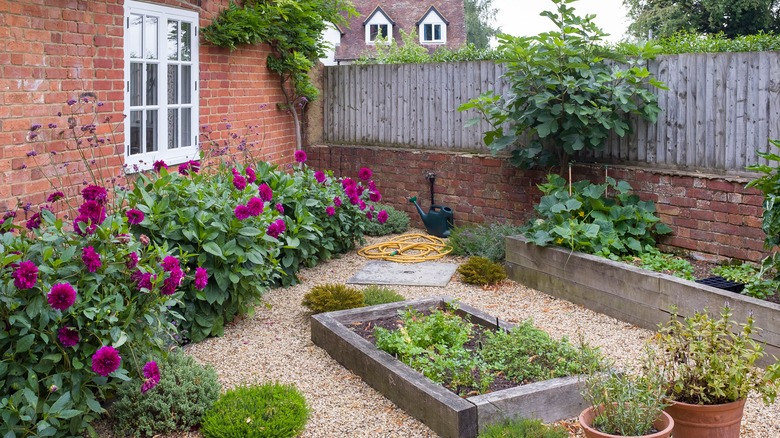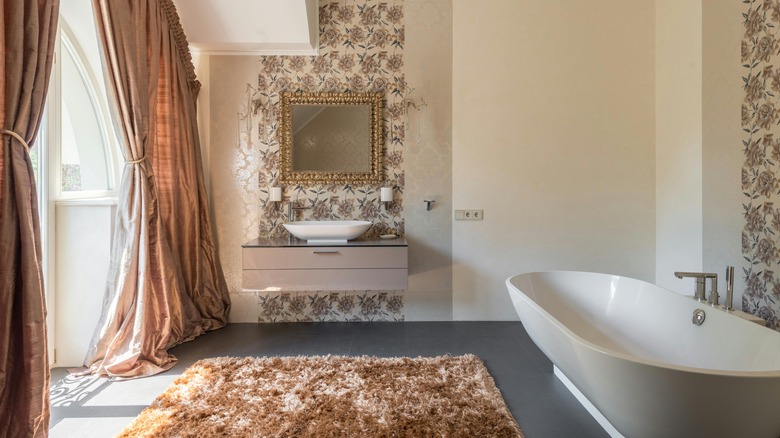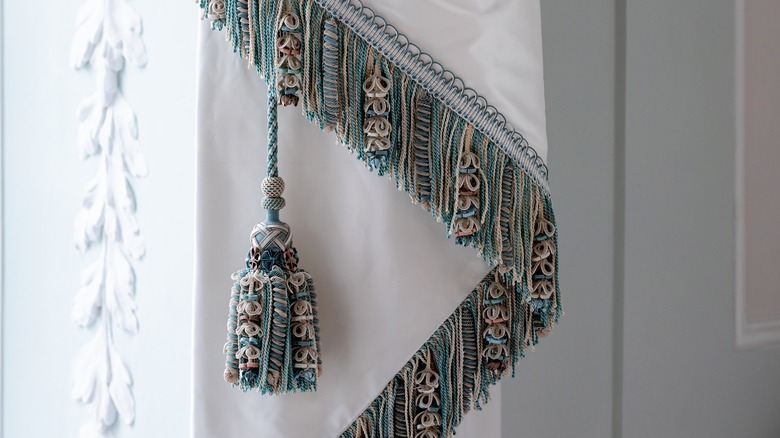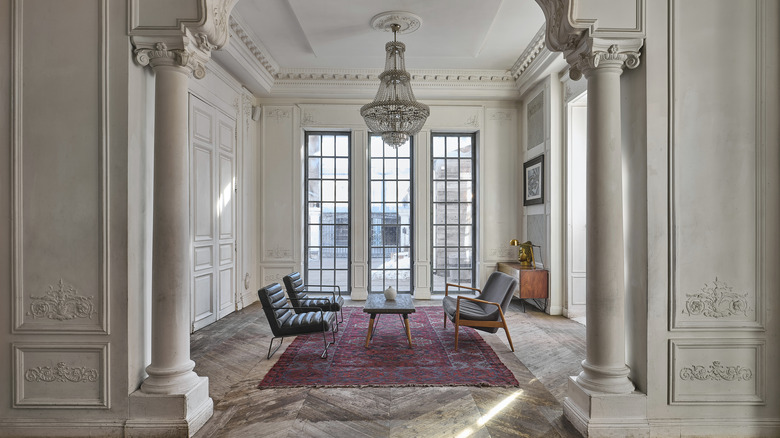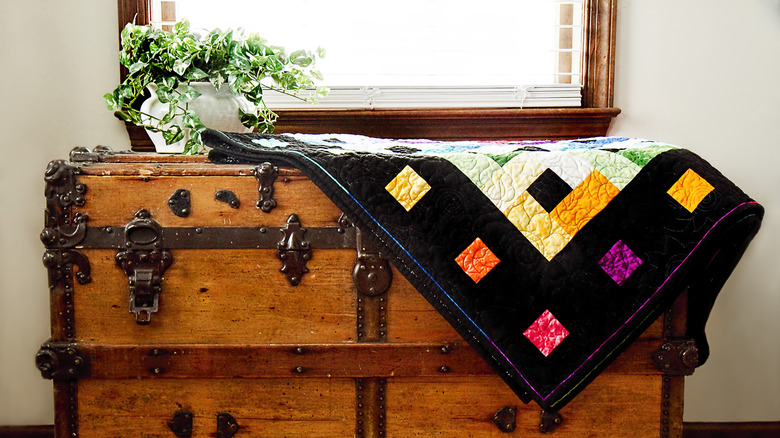13 Stunning Historic Home Design Trends That Should Make A Comeback Today
We may receive a commission on purchases made from links.
Historic homes are typically full of charm. They often come with unique design features, like intricate woodwork and ornate fireplaces. However, old properties can also be a real headache and come with retrofit mechanical, plumbing, and electrical systems. At best, these systems are described as quirky, but when things go wrong, they can be costly. So what should you do if you love the look of a historical home but don't want to deal with all the possible downsides? Luckily, you can make your home appear more historical with some specific design trends. Thanks to HGTV shows like "Fixer Upper," more people are embracing stunning historic trends. If you want to do the same, consider adding elements like parquet floors, ornate details, patterned wallpapers, glass chandeliers, and colorful accents to your home.
It's relatively easy to DIY historic home-inspired features, from architectural ones like courtyard walls or textured plaster elements to decorative touches like fringed curtains or canopy beds. Registered historic homes come with a number of restrictive regulations that can limit your creativity when it comes to maintenance and renovations. Because there are cons to living in a historic home, it can be easier and more cost effective to simply incorporate the design trends of your favorite era into a newer home (or a slightly older one that doesn't have all the features you love).
Parquet will add pattern to your floors
Long before laminate was invented in the 1970s, and even before linoleum became fashionable in the 1860s, parquet floors were popularized as early as the 16th century. Baroque artisans would hand-cut pieces of wood, fit them together in intricate three-dimensional designs, and then stain and polish them to a shine fit for a king. Cost is one of the things you need to consider before installing hardwood flooring, but you don't have to be royalty to recreate this historic flooring aesthetic in your own home. If you're on a budget, try recreating the patterned look with paint. This is a great way to add subtle interest.
Hardware swaps are a quick way to add charm
From Art Deco dresser pulls, to Victorian rosette door sets, to transitional glass cabinet knobs, incorporating period-correct hardware is one of the easiest ways to bring antique design trends into your home. Whether you have a historic home or are inspired by a certain era, stick to a simple swap out first. Switching plate covers, floor registers, and bath accents is a good starting point to make sure the style and material choice feels right in your space before investing time and money into more complex projects, like changing out door hinges and hardware.
Wooden cased openings add architectural interest
Wooden cased openings are making a comeback. They're one of the ways Fixer Upper's Joanna Gaines makes original features stand out in a home. Providing a finished look, cased openings are often found in historic homes, from Colonial and Craftsman to Mission and Modern styles. For this design element, wood is used to completely encase the opening and can be as simple or decorative as desired. The look is relatively easy to achieve, especially if you have woodworking, millwork, or joinery experience. DIYers can also achieve a similar look using stock molding.
Decorative stained glass adds beauty and privacy
Did you know that stained glass isn't actually stained? The vibrant colors are instead created from dyeing molten glass with metallic oxides. Decorative glass has a long and storied history and is frequently found in Gothic, Victorian, and other historic home styles. The trend emerged in private homes when houses started being built close to one another, so beautiful views weren't as commonplace. If it's too expensive or impractical to replace your windows completely, try adding privacy to your home with window film options that mimic the look of stained glass.
Carved plaster accents add wall and ceiling interest
Carved plaster has been used for centuries to add a decorative touch to walls, ceilings, and other surfaces in historic homes. The look is found in period style homes, from Edwardian cornices to Federal wall panels. Traditionally, lime-based plaster is molded before being affixed into place with additional plaster. The process takes practice, but if you want to try creating decorative elements yourself, consider using silicone molds in scrollwork designs or border pieces to make the process easier.
Canopy beds add a dreamy look
Few things are more luxurious than lounging in a canopy bed. Dating to antiquity, canopy beds were historically more about function than form. Heavy curtains draping each side were intended to provide both privacy and warmth. They quickly became a status symbol, often featuring intricate carvings and luxurious fabrics. Whether you opt for barely-there gauze curtains, heavy damasks that double as blackout curtains, or a simple four poster frame, it's easy to get the dreamy look because there are dozens of canopy beds that are perfect for sleeping in style.
Color drenching captures a trendy maximalist look
Color drenching is one of the simplest ways to bring a historical design trend that makes a big impact into your home. The phrase was coined by the experts at Farrow & Ball and describes an approach to painting that is surprisingly easy to achieve. Instead of painting your walls one color and the trim another, use a single color to paint an entire room — yes, even the ceiling. Color drenching creates seamless color blocking that feels bold no matter what hue you choose. Opt for a flat finish, which mimics the look of traditional paints.
Dutch doors let the sunshine in
If you love throwing the windows open when the weather is nice to let fresh air circulate throughout your home, consider installing a Dutch door. Popularized by Dutch farmers in the 17th century, these doors are split vertically into two halves that open independently. Opening just the top half allows sunshine to flood your space, while the closed lower half keeps children and pets safely inside. However, Dutch doors require unique hardware, as well as a weatherproofing seal between the two, so they can be more expensive than traditional doors.
Construct a courtyard for a tranquil outdoor room
Courtyards date to Sumerian antiquity, making them one of the oldest historic design trends on our list. Defined today as any unroofed area enclosed by walls, courtyards are typically centralized but private gathering areas that offer light, fresh air, and a sense of tranquility. Courtyards are ideal for areas with mild climates and in dense urban environments. With a little creativity, you can build your own courtyard by using pavers to create unique garden walls, adding an indoor-outdoor connection to your home that stands the test of time.
Victorian-inspired floral wallpaper is iconic
Before the mass production of wallpaper started in the mid 1800s, the decorative paper was painstakingly painted, flocked, or block printed to create simple decorative motifs that were more frequently found in working class houses than aristocratic palaces. By 1880, famed English naturalist and designer William Morris had created some of the most iconic floral wallpaper designs of all time. Along with stylized florals, historic homes of the Victorian era featured wallpapers with exotic birds, ditsy print florals, and large-scale tropical murals. Get the look in your home with options like the NextWall Acanthus Floral Peel and Stick Wallpaper in Charcoal & Rosewood.
Try tassels or fringe on window treatments
From Native American tribal garments to Charleston flapper dresses, the history of fringe is fascinating. Along with its close cousin, the tassel, the popularity of fringe ebbs and flows as home decor trends change over the decades. If you're tired of sleek shades or boring blinds and want to dress up the windows in a historic Gothic Victorian or early Greek Revival home, hang a fringed shower curtain or tie back window treatments with a decorative tassel. This is a great way to try maximalist decor if you're a beginner.
A glass chandelier makes any room sparkle
Glittering glass chandeliers originated in Venice and Bohemia, where metal workers decorated lighting frames with rock crystal drops and pendants. The style became hugely popular because candlelight would reflect to create dazzling prismatic illumination. Statement chandeliers like the Saint Mossi 5 Light Elegant Crystal Glass Chandelier can still create a sense of magnificence when hung in entryways, dining or living rooms, or great halls. Don't forget to consider the overall dimension, ideal light output, and best hanging height to avoid the mistakes everyone makes when buying a chandelier.
Use heirlooms to add a sense of history and place
Even if you live in a modern space, there are lots of simple and inexpensive ways you can bring a sense of history to your home with heirlooms. Drape heirloom quilts over a guest bed or armchair. Brave the dust in your grandma's attic or basement to find unexpected treasures, from vintage trunks that can be repurposed as coffee tables to larger pieces of furniture that you can bring back to life. And don't underestimate how small elements like old photographs or treasured knick-knacks can make a statement in your home.
